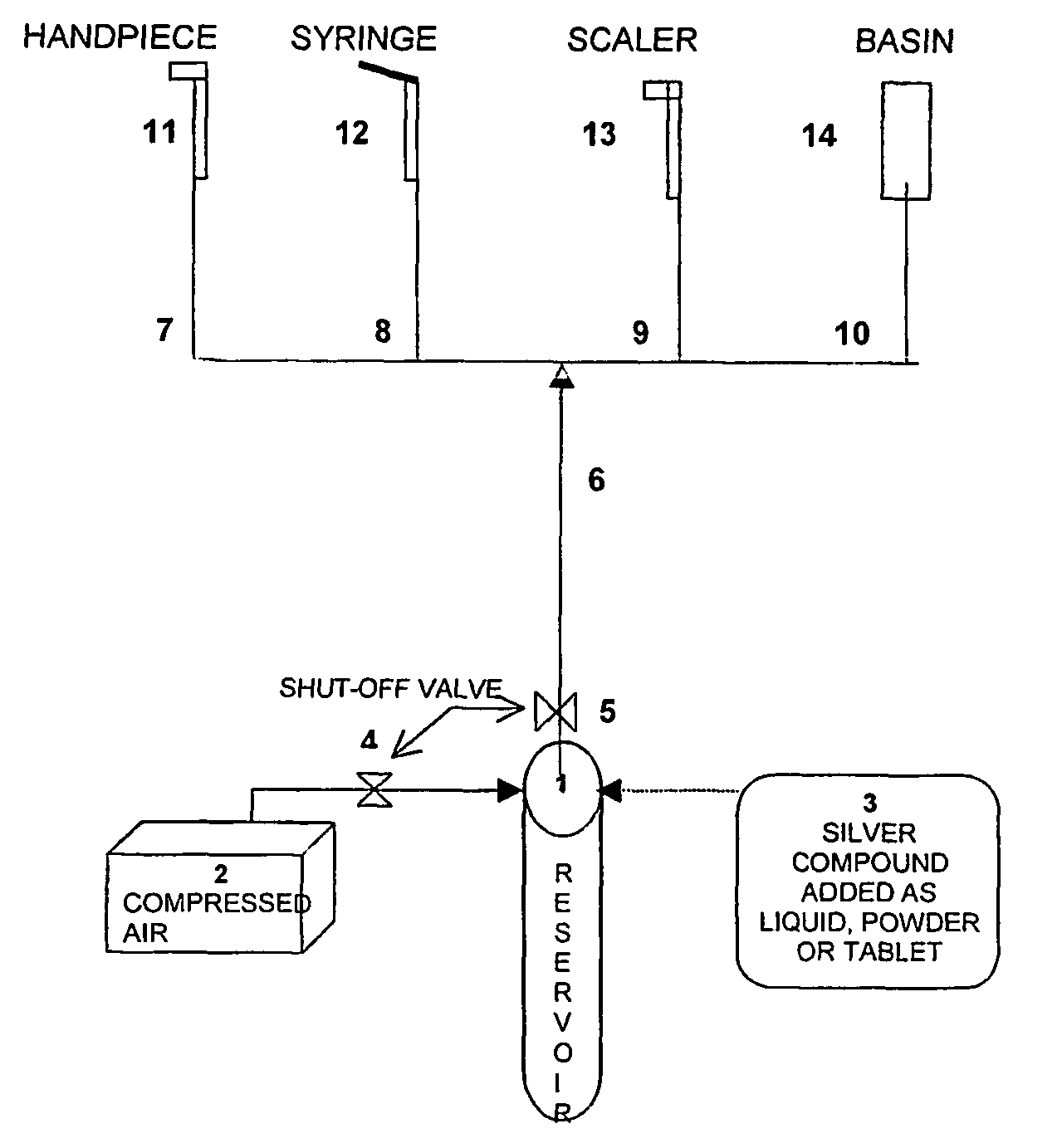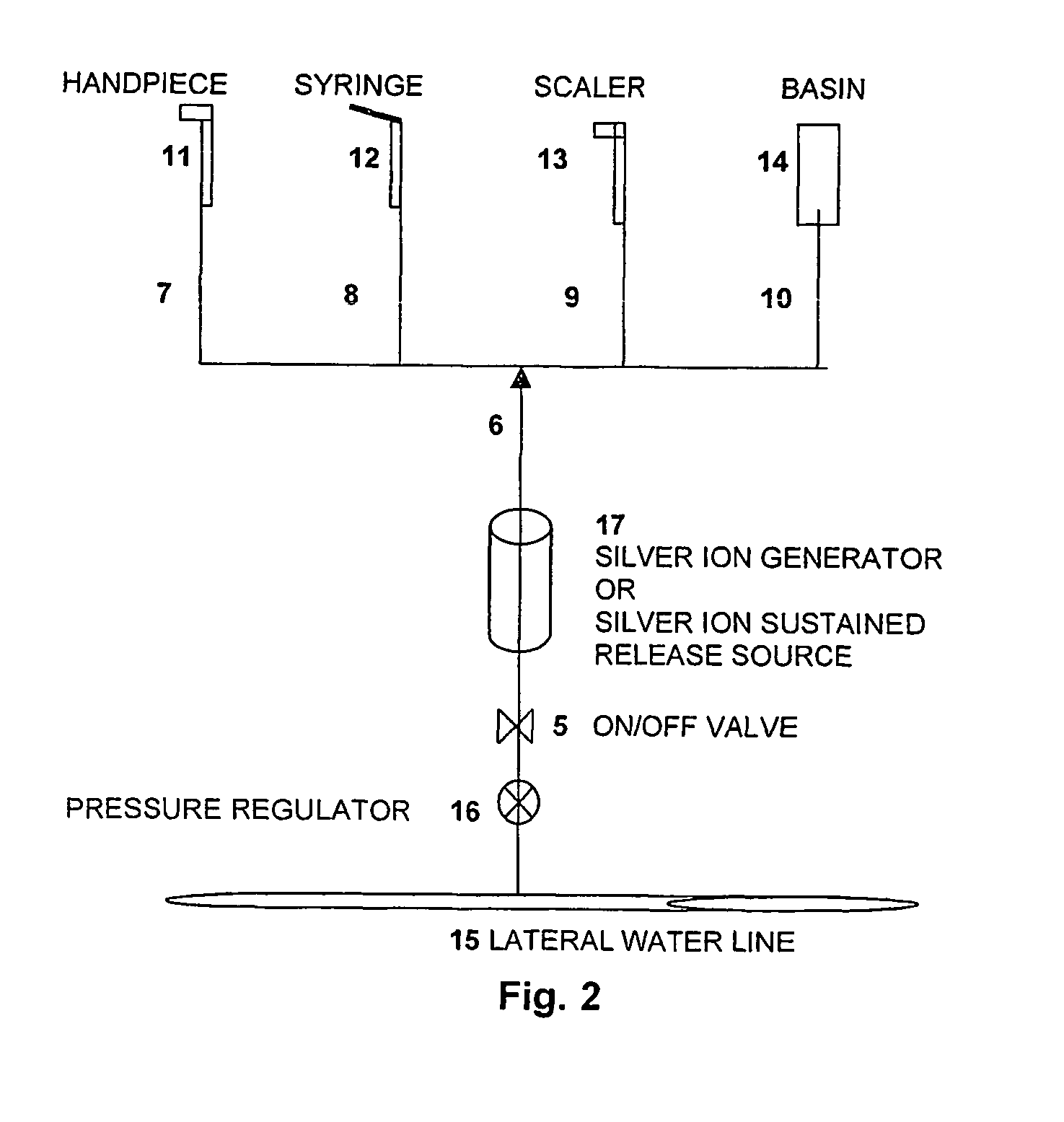Structure and process for continuously treating dental unit water
a technology for dental units and water, applied in the direction of separation processes, instruments, and the nature of treatment water, can solve the problems of contaminating dental treatment water, contaminating the water that passes through the unit with microorganisms, and easily contaminating the water from biofilm, so as to prevent additional biofilm growth, prevent bacterial colonization, and non-corrosive
- Summary
- Abstract
- Description
- Claims
- Application Information
AI Technical Summary
Benefits of technology
Problems solved by technology
Method used
Image
Examples
first embodiment
[0043]Referring now to the drawings wherein the showings are for purposes of illustrating preferred embodiments of the present invention only, and not for purposes of limiting the same, FIG. 1 illustrates a first embodiment where the components of the water disinfecting system are integrated with a typical dental unit. From the water reservoir 1, a water treatment agent is administered to initiate residual disinfection properties in the water. The water treatment agent is a metal ion or metal ion salt, preferably, silver ion salt. Compressed air 2 is allowed to pressurize the reservoir 1 by placing the valve 4 in the open position. Pressurized water containing residual disinfectant in reservoir 1 is allowed to fill dental unit water lines 6, 7, 8, 9 and 10 that supply instruments 11, 12, 13 and 14, respectively, by placing valve 5 in the open position.
second embodiment
[0044]FIG. 2 illustrates the present invention similar to the embodiment shown in FIG. 1 wherein the water source is a lateral line 15 from a pressurized water main or water treatment system. The water treatment is incorporated into each dental unit, commonly referred to as point-of-use (POU) treatment.
third embodiment
[0045]FIG. 3 illustrates the present invention similar to the embodiments shown in FIGS. 1 and 2 wherein the water source is a lateral line 15 from a pressurized water main 18 or water treatment system 18 and the water treatment is incorporated into the main water line 18, commonly referred to as point-of-entry (POE) treatment.
PUM
 Login to View More
Login to View More Abstract
Description
Claims
Application Information
 Login to View More
Login to View More - R&D
- Intellectual Property
- Life Sciences
- Materials
- Tech Scout
- Unparalleled Data Quality
- Higher Quality Content
- 60% Fewer Hallucinations
Browse by: Latest US Patents, China's latest patents, Technical Efficacy Thesaurus, Application Domain, Technology Topic, Popular Technical Reports.
© 2025 PatSnap. All rights reserved.Legal|Privacy policy|Modern Slavery Act Transparency Statement|Sitemap|About US| Contact US: help@patsnap.com



